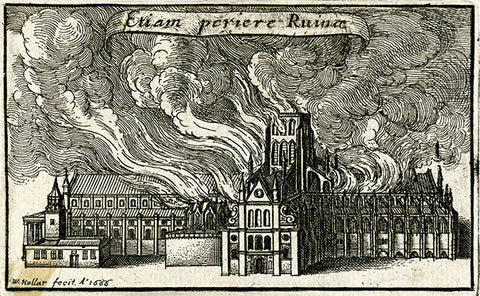World's Premier Meditation Space Creator - Over 8,000 Completed!
As Notre Dame de Paris burned yesterday (April 15 2019), I received calls and messages from acquaintances who knew of my keen interest in the architectural style known as Gothic.
I had heard that the central spire in Paris was under repairs. My first thought was of the roof above the stone vaults and below the outer sheathing. This space was formed using thousands of hand-carved tree timbers, colloquially known as "The Forest", seen here:

"Forest" fires of these very dry timbers are among the greatest threats to religious sites across the globe. Previous notable events have included the 1194 fire at Chartres in France which destroyed the old Romanesque cathedral (and led to the first of the High Gothic cathedrals), Old St. Paul's during the Great Fire of London in 1666 (below), Reims on the front lines in France during World War I, and the Jokhang temple in Lhasa, Tibet in 2018.

Gothic structures are balancing acts, surprisingly robust in some ways and shockingly fragile in others. The stone vaults (and the roof above) are counter-balanced by the external buttressing. The most familiar type are the "flying buttresses" (lower part of photo below from yesterday), which exert huge counter-forces to keep the roof from collapsing the walls. Removing the weight of a portion of the roof can lead to a collapse inward instead. A complete structural review of Notre Dame will doubtless be underway already.
Let us all add our prayers for the future of this magnificent structure, and for the French people for whom it is such a powerful symbol.

David Tolzmann
Author